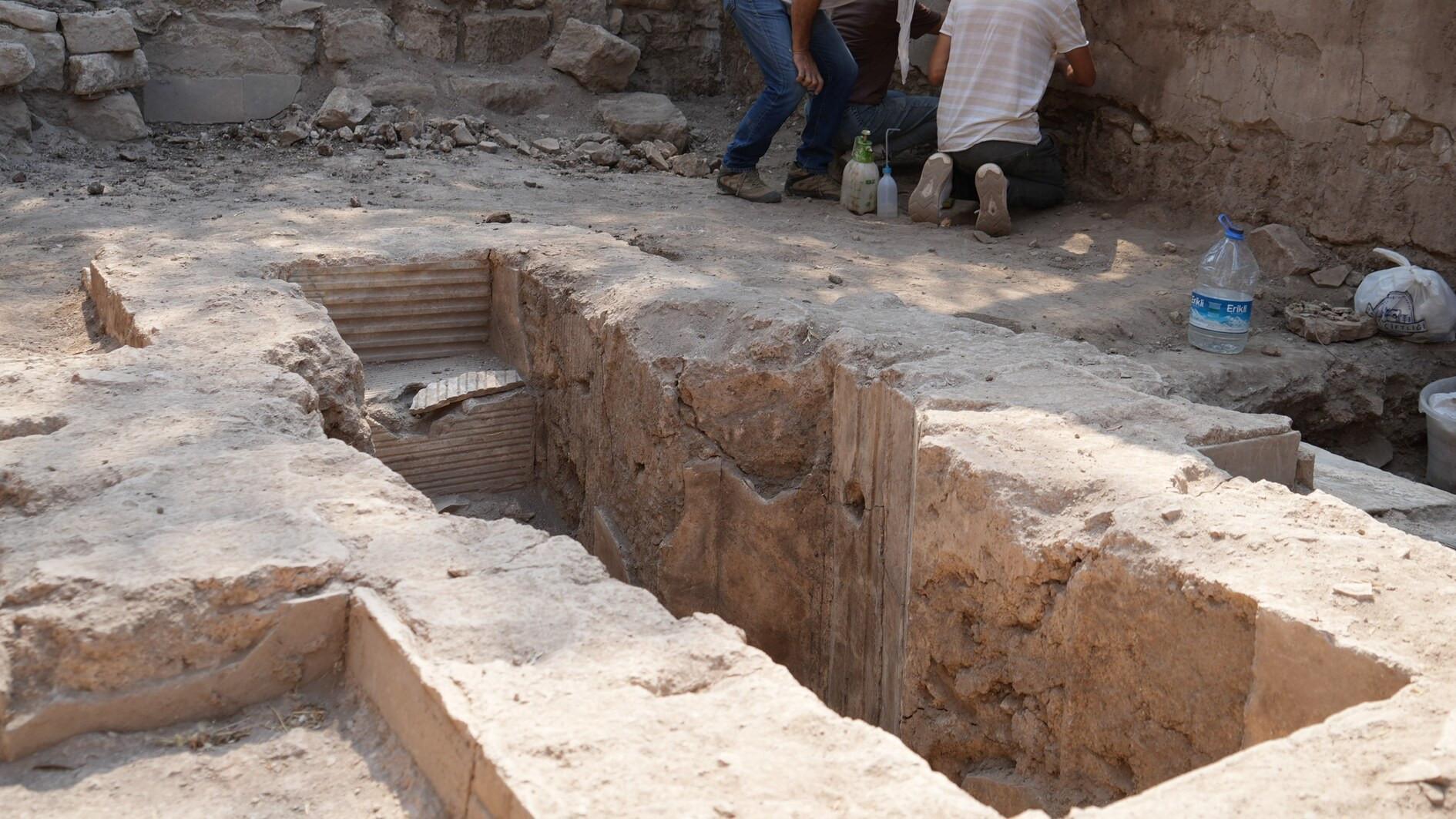
Excavations at the ancient city of Antandros in the northwestern province of Balıkesir’s Edremit district, have revealed a Roman structure that was converted from a villa into a baptistery.
Professor Gürcan Polat, a faculty member of Ege University’s Department of Archaeology and head of the Antandros excavation team, stated that in a newly explored area where work began in 2024 under his supervision, a Roman villa was identified.
The Roman structure uncovered in the Antandros ancient city, where excavations have continued uninterrupted for 24 years in the Altınoluk neighborhood, is expected to shed light on the history of Christianity.
Polat emphasized that this was a significant discovery in the Antandros excavations, which began in 2001. He explained that in the new area explored from 2024 onwards, they determined that the discovered Roman villa had been converted into a baptistery.
Polat said they have been working on various areas aimed at understanding necropolises and settlement layers, which are rarely encountered in Anatolia, focusing on stratigraphy. He added that some areas could not be explored due to private ownership, but from 2024, they began work in a new area, and they believe another villa, located about 30 meters southeast on a slope, was built around 300 A.D.
The newly discovered structure measures approximately 7.20 meters in length and 5.90 meters in width, with marble flooring and walls featuring a base layer and two layers of frescoes. “Initially designed as a Roman villa, the space was later converted into a baptistery following the adoption of Christianity as the official religion,” Polat said.
He added that a baptismal pool one meter in diameter was built in the center of the space, with three steps leading down from the east and west, and the wall frescoes were renewed around the mid-fifth century.
Polat noted that the frescoes on the walls are richly colored and include panels and vegetal motifs. He explained that they are trying to remove lime deposits caused by natural conditions to better observe the designs.
To understand the layout of the complex, new trenches have been opened on both the eastern and western sides. “On one of the walls, there is a Christian monogram carved into the plaster, along with niches. We are now trying to uncover it and understand the full plan of the structure,” he said.
Polat stated that this year’s excavations are planned to continue until the end of December, noting that a scientific team of about 25 people is involved, including nine researchers from Saarland University in Germany. Surface surveys in Antandros began in 2000, while systematic excavation work started in 2007.
History of Antandros
Studies that discovered the ancient city of Antandros started in the mid-19th century when a written statement, which mentions the name of Antandros, was found on the wall of the Avcilar village mosque. It was then discovered that Antandros city had been located on Kaletasi hill, 215 meters above sea level.
Despite the contradictory information about the establishment of the city, it is known that Lydian King Alyattes’ son Kroisos ended the occupation of Kimmer in 508 B.C. Antandros was put under the command of Persians after being occupied by Otanes, one of commanders of Persian King Dareios.